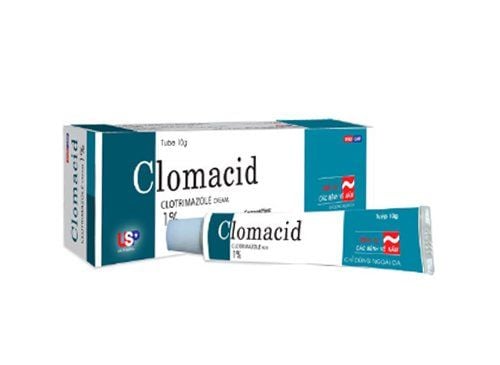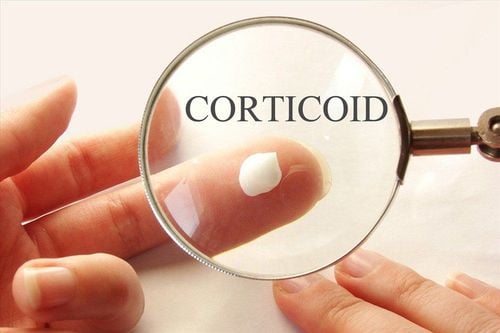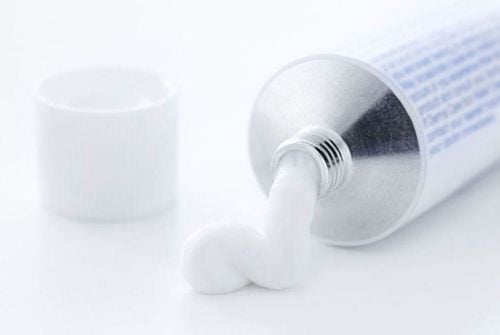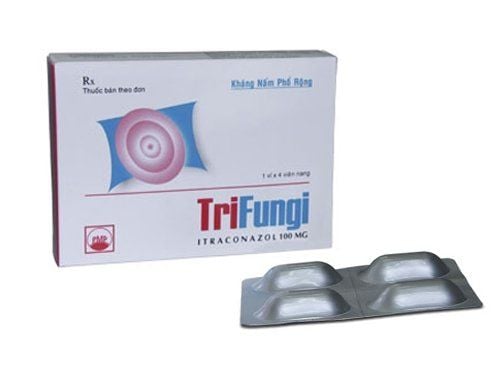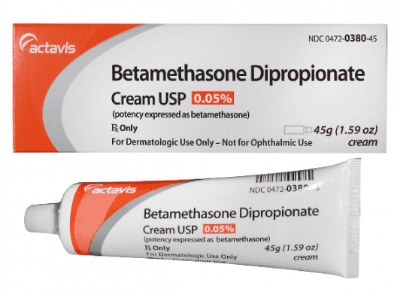This is an automatically translated article.
Nails and toenails thickened, rough can be a warning sign of many diseases. Although not dangerous, it causes discomfort and pain for the patient.
1. Fingernails and toenails can get sick
Fingernails and toenails are composed of sulfur-rich keratin, which is hard and has the function of protecting the tips of the fingers in daily life and work. Similar to other parts of the body, fingernails and toenails can also suffer from a number of diseases due to bacterial infections, fungal infections... caused.
Pathology of fingernails and toenails can be caused by: trauma; manifestations of skin diseases (eg psoriasis, onychomycosis...); bacterial infection, fungal infection; Nail neoplasms or can also be a symptom of systemic disease (eg, cardiovascular, bronchiectasis, dermatomyositis...). When fingernails and toenails are rough and thickened, they are often accompanied by a number of other symptoms such as:
Unusual color of nails and toenails, possibly yellow, stained, brown, black. In addition to thick, rough toenails and fingernails, they can be dry, spongy, and easily broken. Appears some horizontal and vertical marks on the nail or covered with a layer of fine sand to make the nail different from the original. If this condition is long-term, it will cause pain, swelling, redness, more severe bleeding or pus located inside the nail, so it has an unpleasant smell, leading to peeling, damage to the nail and the surrounding area..
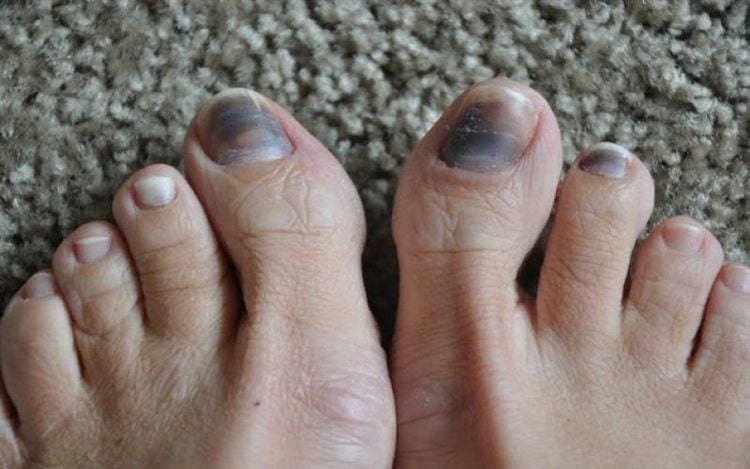
Móng chân dày sừng lâu ngày có thể bị đau nhức và có máu mủ bên trong
2. Some diseases make nails and toenails thick and rough
2.1 Candida nail fungus Candida commonly causes nail disease, causing nail thickening, chronic peritonitis are some of the diseases caused by candida. The cause of candida infection is caused by people working in a secretive and humid environment, in contact with a lot of food... Therefore, for the effective treatment of Candida onychomycosis, patients should note the following:
Improve the environment often have to work. Proper hygiene of fingers after working in a secret and humid environment, contact with a lot of food. Use the medicine exactly as prescribed by the treating doctor. The drugs commonly used for treatment are topical creams Lamisil, Nizoral... and oral drugs Fluconazole, Itraconazole or Ketocnazol. 2.2. Onychomycosis caused by filamentous fungi The manifestation of this fungus is lesions on the free margin of the nail or the edge of the fingernail and toenail. Nail fungus in this form is usually caused by the fungus Trichophyton rubrum. Symptoms include:
Fingernails and toenails rise and lead to being very brittle. The fungus will gradually eat the nail from the free edge, then it can eat the entire nail. It can cause tinea versicolor in the vicinity or other areas of the body. After the treatment is over, the nail will grow back normally. The treatment of nail fungus caused by filamentous fungi is as follows:
Improve the surrounding environment. Clean fingers and toes regularly Use the medicine exactly as prescribed by the treating doctor.
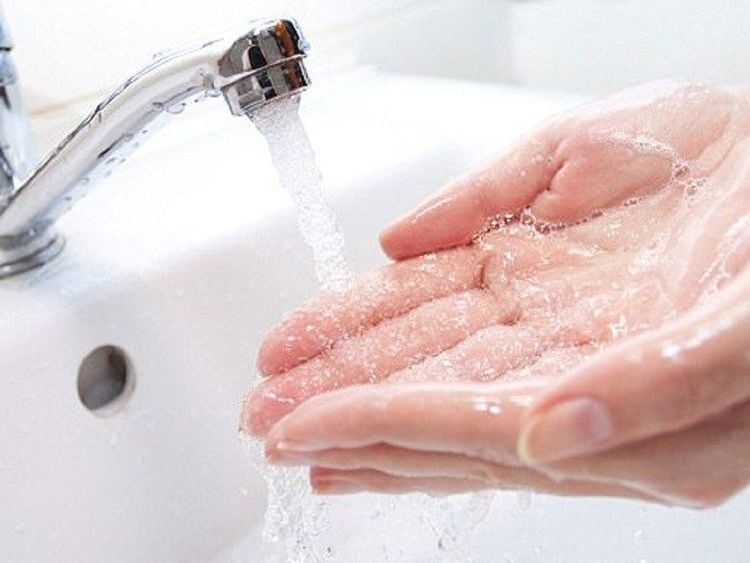
Vệ sinh tay chân thường xuyên để điều trị nấm móng do các loại nấm sợi
2.3. Onychomycosis and peri-nailitis This disease is very common now because it is associated with atopic dermatitis caused by contact with chemicals. Therefore, people who are often exposed to chemicals such as: washing dishes, washing dishes without using protective gloves; Careless nail beauty will easily cause nail inflammation and around the nail. The disease will become more severe when the patient is superinfected. When you have nail and peri-nail inflammation, the common manifestations are:
Inflamed nails, followed by chronic or acute inflammation of the nails. Due to inflammation, the skin around the nail is red, painful and may have pus. long-term hand atrophy, yellow or green and black discoloration The nail surface is rough, streaked, the nail is thick and can be separated from the foundation. In severe cases, there may be an abscess of the foundation. Toenail fungus on one or more nails. When infected, the skin of the hands and fingers is also affected, often called parakeratosis. The treatment of the disease requires:
Avoid contact with chemicals and water by wearing protective gloves when working. Next, the patient needs to be treated for the infection if there is a treatment for dermatitis with drugs containing corticosteroids. 2.4. Split nail disease Split nail disease is also a common disease today. It can be a manifestation of psoriasis, fungal nail infections, medications, chemical exposure or trauma. The causes of split nails and treatment methods are as follows:
Psoriasis, bacterial infections, and fungi that cause split nails need to be treated according to the doctor's regimen.

Nếu móng tay bị tách bạn nên đến gặp bái sĩ để khám và điều trị theo phác đồ
Nails split due to trauma or chemical exposure. In this case the nail is gradually separated, maybe some nails and nails become thinner. When the disease begins, it is only partially separated, but in the long run, the nail can separate from the foundation, between the nail and the foundation, there will be a wide gap, the nail becomes more opaque. This injury is usually caused by the patient having to use their hands to do work such as typing, doing daily tasks... Treatment of a split nail takes a long time and needs to be periodically monitored by a specialist. What the patient must do is to avoid injury or direct contact with chemicals that cause split nails.
Vinmec International General Hospital is a high-quality medical facility in Vietnam with a team of highly qualified medical professionals, well-trained, domestic and foreign, and experienced.
A system of modern and advanced medical equipment, possessing many of the best machines in the world, helping to detect many difficult and dangerous diseases in a short time, supporting the diagnosis and treatment of doctors the most effective. The hospital space is designed according to 5-star hotel standards, giving patients comfort, friendliness and peace of mind.
Please dial HOTLINE for more information or register for an appointment HERE. Download MyVinmec app to make appointments faster and to manage your bookings easily.




